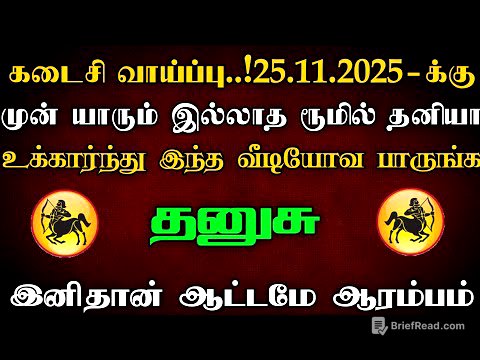TLDR;
The video discusses neck pain, cervical radiculitis, pinched nerves, and facet syndrome. It emphasizes not panicking, understanding the source of pain, and considering non-surgical options first. Key points include the importance of posture, the role of muscles and trigger points, and the need to understand nerve root distributions. The video also touches on treatments like ice, heat, enzymes, and dietary changes, particularly reducing sugar intake.
- Don't panic about neck pain and MRIs.
- Poor posture is a major cause of neck problems.
- Understand nerve root distributions to identify pain sources.
- Consider massage therapy for muscle-related pain.
- Reduce sugar intake to decrease inflammation and promote healing.
Introduction: Understanding Neck Pain [0:00]
The video introduces the topic of neck pain and related conditions like cervical radiculitis, pinched nerves, and facet syndrome, which affect a large number of people. The aim is to provide solutions and guidance, addressing the anxiety and panic that often accompany these conditions. The speaker emphasizes the importance of understanding the underlying causes and avoiding unnecessary invasive procedures.
The Problem with Panic and MRIs [0:58]
The speaker advises against panicking when experiencing neck pain, as anxiety can worsen the condition by increasing adrenaline, cortisol, and muscle contracture. He highlights that most people don't need surgery, and many who undergo it might not actually require it. MRIs can cause unnecessary worry because their findings often don't match the patient's symptoms. It's important to stay calm and understand that the body has self-healing capabilities.
Pinched Nerves and Disc Herniation [3:27]
The video explains that pain isn't always directly caused by herniated discs or pinched nerves. Poor posture, especially forward head posture, and repetitive movements are major contributors to neck problems. Disc herniations can cause inflammation and pain, but they often resolve on their own. The speaker stresses the importance of addressing postural issues to facilitate healing.
Scalene Syndrome and Massage Therapy [6:32]
Scalene syndrome and thoracic outlet syndrome can cause nerve compression due to muscle contraction from poor posture and stress. Massage therapy is recommended to release contracted muscles, break down adhesions, and improve range of motion. Releasing these adhesions can significantly improve neck movement and alleviate pain caused by nerve compression.
Understanding Dermatomes and Nerve Roots [7:59]
The video explains how to identify which nerve root is affected based on the location of pain or tingling. Dermatomes show the areas of the body controlled by specific nerve roots. This knowledge helps in understanding if the MRI findings correlate with the symptoms. If the MRI shows a problem at one level, but the symptoms are related to a different nerve root, invasive procedures at the MRI level may not be effective.
Reflexes, Motor Strength, and Atrophy [9:04]
Three key indicators suggest the need for more invasive procedures: loss of reflexes, weakening motor strength, and muscle atrophy. If these are present, further intervention might be necessary. However, even with some atrophy, muscle strength can often be regained through rehabilitation. The speaker urges viewers not to rush into surgery unless it's absolutely necessary.
Facet Problems and Referred Pain [10:11]
Facet joints in the back of the spine can become arthritic or inflamed, causing referred pain to areas like the upper trap or scapula. Poor posture often leads to straightening of the neck, but the speaker advises against aggressively trying to correct it if the body has already compensated. Instead, focus on maintaining good posture and performing postural exercises.
Trigger Points and Muscle Spasms [11:40]
Trigger points in muscles like the SCM (sternocleidomastoid) and trapezius can cause referred pain to the head, face, and other areas. Compressing nerves by moving the head can help determine if the pain is nerve-related or due to muscle spasms and trigger points. If compressing the nerve doesn't worsen the pain, it's likely coming from muscle-related issues.
Multi-Dimensional Approach to Diagnosis [14:46]
The speaker emphasizes the importance of a multi-dimensional approach to diagnosing neck pain, viewing the body as a whole puzzle. It's crucial to identify the source of the pain and understand how different factors contribute to the condition. Patients should become somewhat knowledgeable about their own bodies to make informed decisions about invasive procedures like epidurals, steroid injections, or surgery.
Nerve Root Function and Muscle Testing [15:36]
The video explains how to assess nerve root function through muscle testing. For example, weakness in the deltoid muscle indicates a C5 nerve issue, while bicep weakness suggests a C6 nerve problem, and tricep weakness points to a C7 nerve issue. Correlating these findings with MRI results helps in making a complete diagnosis. If muscle strength is intact despite a disc herniation, surgery may not be necessary.
Cervical Disc Degeneration and Posture [17:51]
Cervical disc degeneration involves thinning and dehydration of the discs. The speaker is skeptical about stem-cell therapy reversing this. He stresses the importance of taking care of the discs to prevent degeneration, as the body doesn't typically regenerate disc thickness. Bone spurs may reabsorb, but severely desiccated discs don't usually return to their original state. Poor posture is a primary cause of disc degeneration, osteoarthritis, and spurs.
The Impact of Smartphone Use on Posture [20:10]
The weight of the head increases significantly with forward head posture, placing excessive stress on the neck. The speaker is particularly concerned about the impact of smartphone use on children and young adults, leading to early development of dowager's humps and spinal issues. He urges viewers to promote good posture by raising phones and tablets to eye level and performing chin tucks.
Treatment Tips and Lifestyle Changes [22:18]
For managing neck pain and degeneration, the speaker recommends maintaining good posture, using ice and moist heat, and considering infrared therapy. He also suggests cervical over-the-door traction and the enzyme serrapeptase to break down scar tissue. Supplements like turmeric, curcumin, ginger, boswellia, and apple cider vinegar can also be beneficial. Most importantly, he advises cutting down on sugar to reduce inflammation and promote healing.
The Importance of an Alkaline Environment [24:38]
The video concludes by emphasizing that healing requires creating the right environment in the body. Reducing sugar intake helps to create a more alkaline environment, which reduces inflammation and supports the immune system. An alkaline environment is crucial for overall health and healing. The speaker encourages viewers to subscribe for more information and to share the video to help others.









